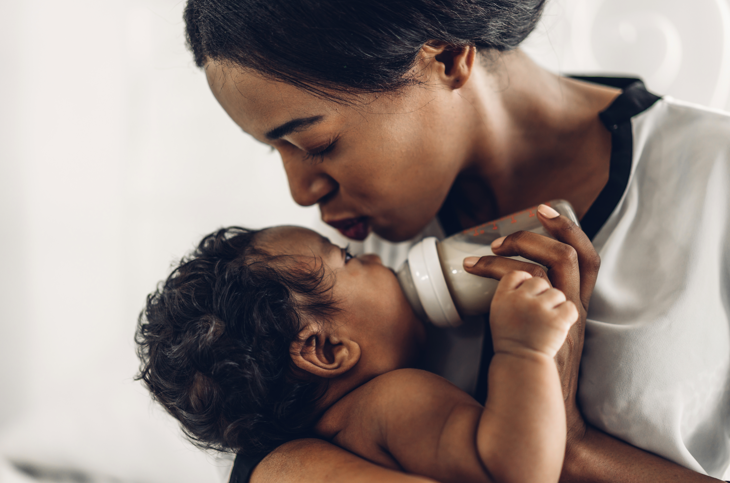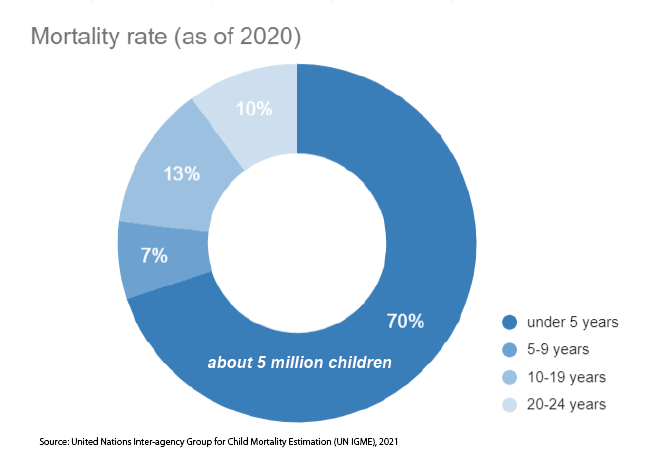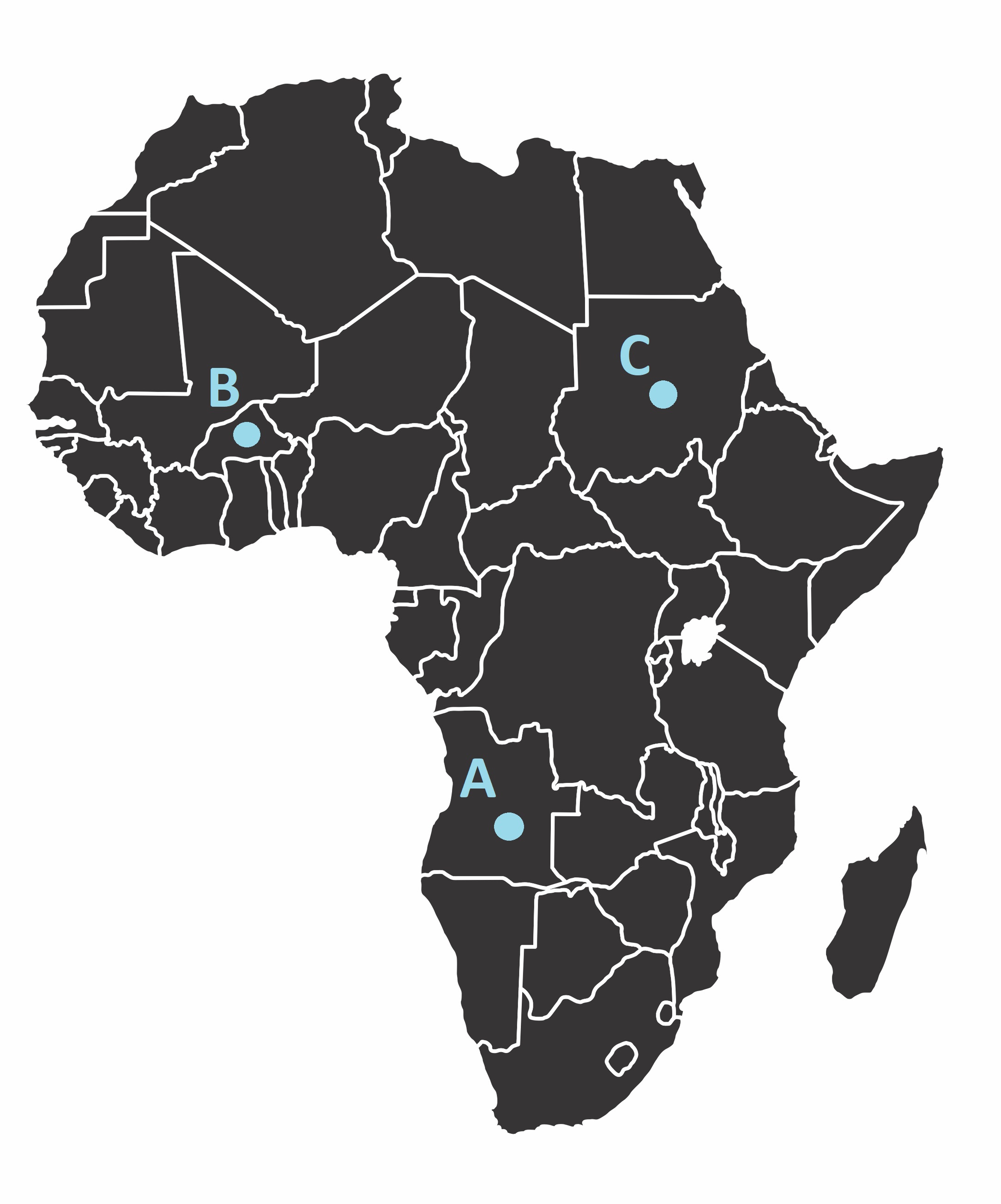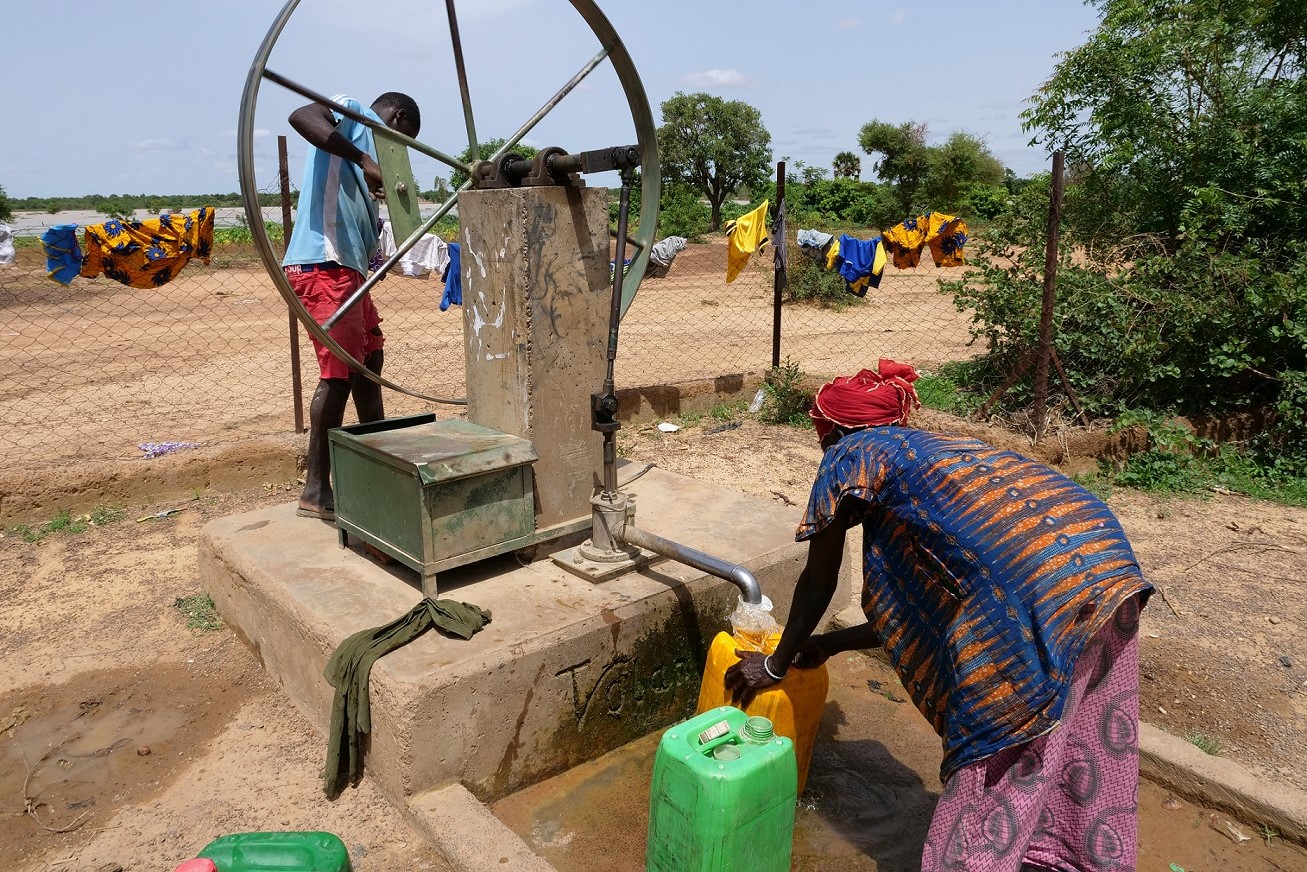
“Good Health and Well-Being” is the topic of this unit.







| 1. | How many people are chronically malnourished according to the World Food Program? |
| ____________ are chronically malnourished according to the World Food Program. |


| 2. | Did you do your research on the sub textbook? Did you find the activity to solve the hunger issues? Please tell me what you feel about it. |




In the next part, we are going to learn about “Good Health and Well-being”.
次のパートからは、「心身、社会的な健康と幸福を」について学習を進めましょう。

| 1. | Where is Burkina Faso? A, B or C? |
| The answer is _________. |



| 2. | What can you see in the pictures? Please describe as many as you can from each picture. |
|
|
|
| Answer: |






|
newborn 新生児の
Newborn babies need the utmost care.
|

|
mortality 死亡率
The organization is working hard to decrease the mortality rate.
|

|
healthcare 健康管理
The government is working to improve its healthcare system.
|

|
treat 治療する
The doctor is treating my mother for the flu.
|


Part D_3 Vocabulary


| 1. | Many _____________ need immediate medical care. |
| 2. | The _______________ rate in the country is about 45%. |
| 3. | _______________ should be free for everyone. |
| 4. | Do you know how to _______________ a person with malaria? |




Then, let’s move on to the next part.


In 2020, almost 5 million children under the age of five died worldwide. Newborns account for nearly half of that total (2.4 million). Generally, 2.2 million children and young people aged 5 to 24 years old died in 2020. These high mortality rates are primarily the result of illnesses that can be avoided or treated.
However, there are still many people who do not have the right knowledge, and whether newborn babies can have healthy and safe lives simply depends on where they are born. In developing countries, many mothers die from pregnancy and childbirth. We can create a healthy and long-lived society by understanding the proper preventive measures for infectious diseases and gender.



| 1. | According to the graph, which age has the highest mortality rate? |
| Answer: |


| 2. | How many children and young people aged 5 to 24 died in 2020? |
| Answer: |


Pneumonia mortality in children is significantly associated with malnutrition, a lack of good water and sanitation, indoor air pollution, and a lack of healthcare access. Antibiotics are a simple way to treat pneumonia.
In 2017, 480,000 young children died from diarrhea. Oral rehydration salts can prevent between 70 to 90 percent of deaths.
Malaria claimed the lives of roughly 274,000 children under the age of five in 2019. The disease could easily be prevented with insecticide-treated mosquito nets and quick diagnostic tests.
Many precious lives might be saved if countries or communities had secure and decent medical administration systems, medical facilities and knowledge.



| 1. | How could malaria be easily prevented? |
| Answer: |


| 2. | How many children died from diarrhea in 2017? |
| Answer: |




If you have any questions, please ask me.


| 1. | In your country, what do you do when you get sick? |
| Answer: |


| 2. | What do you do to avoid getting sick? Do you have any things you always do? |
| Answer: |






